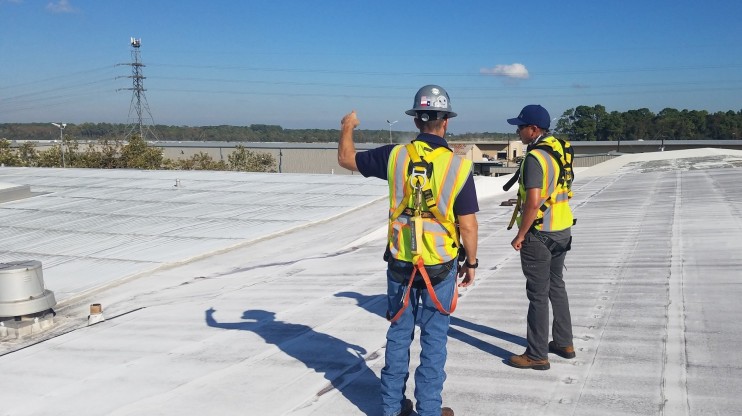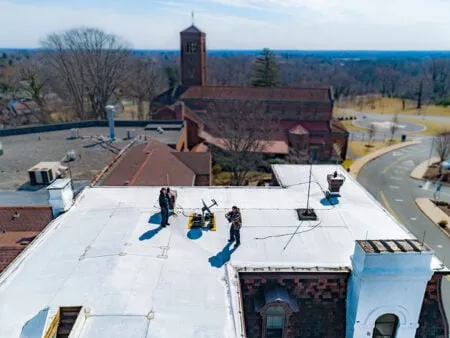Have Questions? We’re Here to Help!
Discover more about improving facility performance while reducing costs.

Roof design can be a complicated and costly affair. From rectifying severe weather damage to executing capital renewals, roof designers consider myriad factors to create the mountain of drawings and specifications required for even a small roof area. Weather data, UV exposure, rooftop units, and traffic—these all take time to consider and, of course, time is money.
So, without cutting corners, how can organizations get cost-effective roof designs, especially when they have many buildings that will require repairs or replacements over time?
The devil is in the data—or rather, a lack thereof.
Performing regular roof assessments can put your organization a step ahead when it comes time to engage in roof design. Field surveyors document vital dimensions other than roof area like the height of curbs, thresholds, accessories like drains and scuppers, and various other roof penetrations.
With this data in hand, there are a few key benefits:
You might be saying “sure, but those assessments cost money too!” And you’re right, but for pennies on the dollar per square foot, even a large portfolio can be surveyed quickly and cost-effectively, and the result could easily offset the additional cost on a single design, let alone dozens or hundreds.

Roof assessments afford additional efficiencies. While year one assessments on a portfolio are the most costly, subsequent assessments on the same buildings in future years will almost always reduce in cost.
There are plenty of lessons learned in the data collection process. Surveyors get to know their site contacts and the buildings better. They know what to look for based on the photographic documentation recorded in previous years. There’s also the opportunity for savings on travel for the field teams as they learn which clusters of buildings can be assessed in a group within a geographic area.
What is the proof, you say? While we can’t name names in this case, one of our banking clients manages a portfolio of over 2,500 buildings and has seen their design and specification time for a single project go from 20-40 hours in their first year of assessments to six hours per design in year two.
Another big advantage of recurrent roof assessments is staying ahead of leaks. Field surveys can identify small problems that can be fixed with basic preventive maintenance before they become big problems that require forensic investigations and the resulting repair or replacement of the roof.
Consistently performing regular roof assessments has a big impact on your business and its bottom line. From creating efficiencies in the design process to stopping leaks before they start, annual roof assessments can garner significant savings for organizations.
For the most impact, trust your data – and its sources. An independent roof consultant helps clients gain an understanding of the condition of their facilities and then leverage that data to generate expert, cost-effective roof designs that improve facility performance and reduce the total cost of ownership of a vital asset. Managed facility services like these can alleviate the burden of doing this level of data collection and analysis in-house, as well as bring a level of expert insight that can uncover opportunities to create efficiencies across an organization’s facility portfolio.
Discover more about improving facility performance while reducing costs.